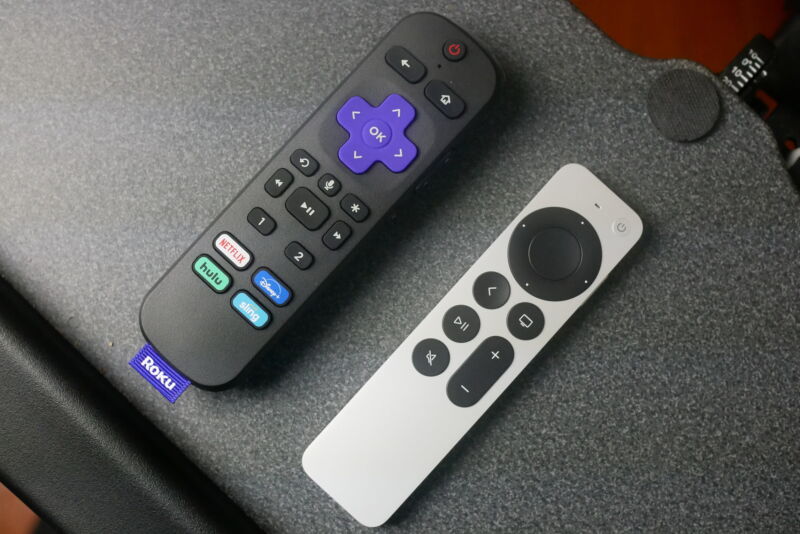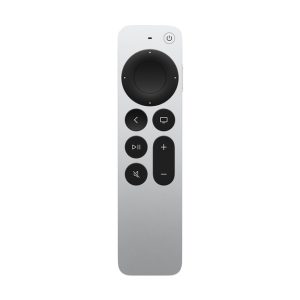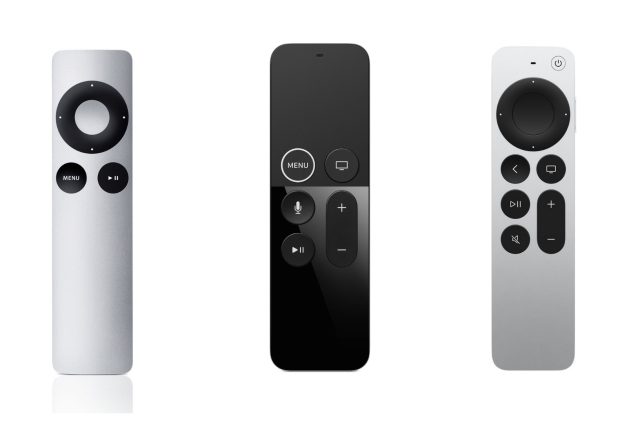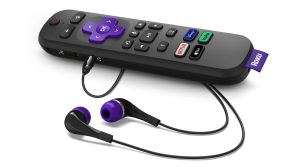A great remote in hand is worth two you’d want to throw in a bush —
New remotes bring sensible upgrades, but only if you’re tied to these streamers.
Corey Gaskin
–

Enlarge / Apple’s and Roku’s new remotes are a welcome upgrade to their respective streaming experiences, and they’re compatible with older models.
Corey Gaskin
Apple and Roku know that remotes for streaming devices are important. It’s why they recently inked a deal to put an Apple TV+ button on Roku remotes going forward. It’s also why they’ve made some thoughtful upgrades to their respective streaming devices in the form of redesigned remotes. Both companies are focused on improving usability and adding features via the remote, rather than retooling the streamers themselves.
Apple’s new Siri Remote and Roku’s Voice Remote Pro are new devices that existing users can buy to make their streaming experiences much less frustrating (in Apple’s case) or easier and more feature-rich (in Roku’s). For Apple, a redesign was long overdue. Apple TV remotes have been the stuff of nightmares since the first and only redesign over a half-decade ago. Roku’s remotes never had that sort of overengineering problem—instead, they’ve suffered from the opposite issue, often feeling hollow and cheap while missing some useful functions on all but the highest-end Roku players.
Now, these remotes aren’t in direct competition with one another. And in some key areas like price and wide-ranging support, the streamers they control both fall behind the latest Google Chromecast—a device we found preferable not just to those, but to Amazon’s Fire TV platform as well. But for anyone who’s already using a streaming option from Apple or Roku, scrapping those devices entirely could be a significant waste of money and a general pain depending on their setup. Adding one of these new remotes, though, will improve the experience appreciably.
The new Siri Remote

Apple TV Siri Remote
(Ars Technica may earn compensation for sales from links on this post through affiliate programs.)
Apple’s first-generation Siri remote was too thin and slick, being made of aluminum and glass. Its touchy trackpad was a minefield you couldn’t avoid. That anxiety-inducing design stuck around the Apple TV for six long years, but it’s now been totally redesigned.
Compared to the first-generation remote’s aluminum body, the new Siri remote has been slightly beefed up for a better grip and feel. The remote has a more satisfying heft in the hand, and it’s thick and square enough to avoid feeling like you might drop it when you go to press a button. The more robust build quality should also fare better if/when drops do occur, especially compared to the aluminum and glass design of the previous generation.
The new design does incorporate some touch elements introduced in the last Siri Remote, though. Thankfully, it’s not as touchy (ahem) as before. That’s largely due to the smaller footprint of the touch area. Instead of taking up a third of the remote’s body, touch sensitivity is confined only to the center button itself, which is also concave. That means it’s much harder to accidentally swipe the touch controls while reaching for or grasping the remote. Furthermore, you can disable touch entirely or, like the previous generation, adjust the touch sensitivity as well.
Whether you have touch control enabled or not, you can use the directional arrows surrounding the enter button to navigate entirely, as early Apple TV adopters used to enjoy. The mixture of these two is the perfect sweet spot for usability. It’s fun to still be able to flick through titles but also click buttons when I want more precision. The touchpad now reacts only when I want it to, and it works smoothly for selection or scrubbing through media playback.
There’s also a new power button in the top right corner which you can hold down to power off your Apple TV and any other IR devices you’ve paired with the Siri Remote. Pairing up my older Polk Surroundbar 5000 with the Apple TV via the latter’s remote learning function was easy enough, though I couldn’t pair my first-generation Beats by Dre Beatbox in the same way.

Enlarge / Apple’s new Siri Remote takes design cues from both previous generations, creating an ideal balance of analog and high-tech feel. From left to right: Apple TV Remote, Siri Remote (first gen), Siri Remote (second gen).
Apple
Both the Polk and Beatbox remotes use direct line-of-sight IR, so that was a somewhat unexpected bummer. I do realize we’re talking about controlling a device that has been discontinued for the better part of a decade now, but it still cranks some serious sound, OK? You shouldn’t have any issues controlling relatively new soundbars or TVs with the latest Siri Remote, though.
The Siri activation button has also been moved to the side of the remote, where I initially mistook it for a volume rocker, as this is the volume control placement on both Roku’s and Google’s streaming remotes. I’d prefer the latter placement. “Hey, Siri” voice activation could ameliorate any potential awkwardness, but Siri’s actual functionality is unchanged with the new remote, so that’s still a bit lacking. This seemed like a good time to add such support, but for now, it’s easy enough to settle for my nearest iOS device handling the command instead. Battery life on the Siri Remote seems strong, as I’ve been using it for about an hour of TV time a day for four weeks and have 60 percent of the battery leftover at the time of this writing.
Apple says the new Siri Remote works with both generations of Apple TV 4K streamers as well as the Apple TV HD.
Roku’s Voice Remote Pro

Roku Voice Remote Pro
(Ars Technica may earn compensation for sales from links on this post through affiliate programs.)
Roku’s remotes all vary slightly from device to device, be it a TV, streaming stick, or otherwise. But the Voice Remote Pro is the best iteration the company has released in nearly every way.
Compared to the others, the only knock I can give is its inclusion of a Sling TV button, which is sensibly replaced by an Apple TV+ shortcut on Roku’s Express 4K+ remote. Roku says this change will also be made in future production of the Voice Remote Pro, as the two companies recently agreed to keep this change going forward on all of Roku’s remotes. In the end, it’s not a huge deal, as there are also two programmable buttons you can easily map to apps or common functions to ameliorate this.
Depending on your Roku device, you could be missing any of the following buttons and features of the Voice Remote Pro:
- A remote-finding siren
- Hands-free “Hey, Roku” commands (which you can enable or disable)
- A rechargeable battery, unfortunately charged via the ancient microUSB standard (a cable is included, but come on)
- A 3.5 mm headphone jack for private listening
- Two programmable buttons that can act as shortcuts to apps or commonly used commands, like switching the HDMI input
Even if you have Roku’s top-of-the-line devices, like the Roku Ultra or Streambar Pro, picking up a Voice Remote pro will add hands-free “Hey Roku” commands and USB charging beyond your current remote’s features. It’ll also beef up the remote’s footprint in a pleasing albeit not totally necessary way
All of Roku’s remotes are made of plastic and feel light and hollow. The one that came with my TCL Roku TV, bought in 2020, feels the cheapest, lightest, and most bottom-heavy, while the regular voice remote (which comes with the Express 4K+ and a couple of other Roku devices) and Voice Remote Pro both feel more solid and balanced. The Pro is the thickest, but that made very little difference for better or for worse. Both feel superior to my Roku TV’s remote in every way, from different plastic textures to the overall weight and balance.
Features are the main reason you’ll want to upgrade, not how it feels in hand. In this area, all works smoothly and as intended right out of the gate. Plugging in the remote to a power source put mine directly into pairing mode. Once I was in the appropriate TV menu, connecting it to my TV was done with a push of a button.
Plugging in a pair of headphones to the remote works immediately, too. As for volume, it does get loud enough to drown out people talking, and different-style headphones can help with that as well. Unfortunately, there’s no compatibility with Bluetooth headphones, so you will have to use a wired set like those that come with the remote.
The Voice Remote Pro’s siren is loud enough to help you find your lost remote in the room or the next room over.
The side of the remote has a switch to disable and enable “Hey, Roku” voice commands, as well as a 3.5 mm headphone port.
RokuEarbuds are included with the remote…
Roku… as is a Micro USB cable to charge it.
Roku
“Hey, Roku” works well, as does the switch to disable it, and saving a command via the shortcut button only requires a long press after the action is executed. For basic commands and functions, this all works exactly as you’d like. But as noted in our comparison between Roku, Chromecast, and Amazon’s Fire Stick, it’s not always the best way to search for content. Of course, if you have a Roku currently, then you’re likely familiar with how best to search for content, and the Voice Remote Pro won’t be changing that.
If you didn’t have it before, the remote finder is a feature you may appreciate and something that really should be standard for all tiny streaming remotes like this. There are options to change the sound to sharper or more boisterous tones, as well. Whatever your preference, it gets loud enough to hear in a room or the next room over, as long as your TV isn’t blaring.
As far as battery life goes, I’ve been testing this remote for about four weeks and have 80 percent battery left from the original charge. It’s not getting a ton of use though, mostly just to switch sources or queue something up to watch, so your mileage may vary. Regardless, it’s a nice perk to skip stocking batteries for one more device.
In terms of compatibility, Roku says the Voice Remote Pro will work with “all Roku TV models, Roku audio players, and most Roku players,” including the Roku Express, Roku Express +, Roku Streaming Stick, Roku Streaming Stick+, Roku Ultra, Roku Ultra LT, Roku SE, Roku 2, Roku 3, Roku Premiere, Roku Premiere+, and Roku 4. The company notes that some older Express and Express+ may not work, however.
The verdict
When it comes to cutting-edge, feature-rich streaming experiences, how much do these remotes push the category forward? Not much. But do they make Apple TV and Roku die-hards’ lives better? Undoubtedly.
In short, neither of these upgraded remotes makes its respective streaming platform higher-valued or generally better picks over the Google Chromecast with Google TV, our current general-purpose pick among media streamers. For most people, the $50 Chromecast will deliver an overall better experience with its wide device compatibility, superior search functionality, and, most importantly, its unmatched ability to serve up relevant and varied watch suggestions.
Still, if you already have an Apple TV that you don’t plan to replace, and you’re willing to pay a bit more to eliminate that “don’t touch the remote!” streaming anxiety, upgrading to the new Siri Remote will successfully do that. As for Roku’s Voice Remote Pro, $30 is awfully close to the $50 price of a brand-new Google Chromecast (which itself would work with any Roku TV). But if you’ve already made your bed with a Roku streamer and want more out of it, you’ll be doing yourself a favor by getting a remote that’s harder to lose, doesn’t require batteries, and adds private listening and hands-free voice control to your TV.

